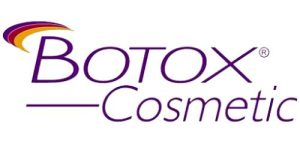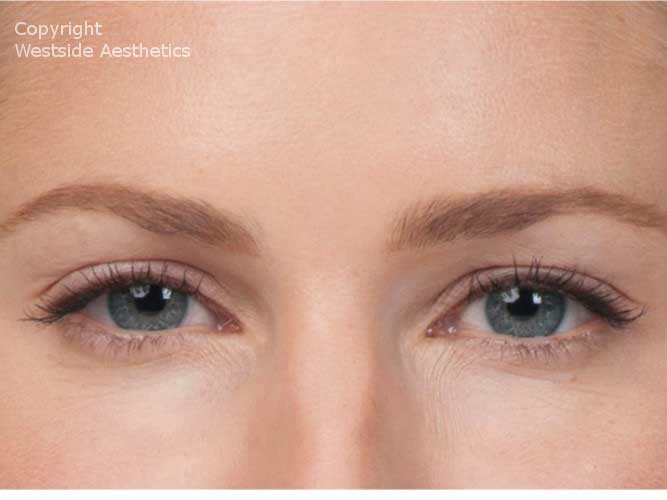As with all of our procedures, safety is a number one concern for us at RIVKIN Aesthetics. We practice strict Botox safety protocols to ensure great results.

BOTOX SAFETY BY THE NUMBERS:
- 3,181,592: Number of BOTOX cosmetic treatments administered in the united states in 2006 alone
- 300,000: Number of men who received treatment with BOTOX cosmetic in 2006
- 3,000: Publications on botulinum Tomin Type A in scientific and medical journals
- 97: Percentage of people satisfied with their BOTOX cosmetic treatment based on a survey of approximately 1,000 patients
- 20: BOTOX indications approved by regulatory authorities around the world including the aesthetic indication
- 11: Descriptor for the glabellar (vertical) lines between the brows which can be treated with BOTOX cosmetic that can help improve ones overall facial appearance
- 6: Years since FDA approval of BOTOX cosmetic for the treatment of the moderate to severe glabellar (vertical ) lines between the brows in adults 18 to 65
- 1: Rank of BOTOX cosmetic on list of Top 5 surgical and Non-surgical physician administered cosmetic procedures according to American society for aesthetic plastic surgery
- 1,000,000s: People who receive treatment with BOTOX for medical and aesthetic purposes around the world
- 10,000: People in clinical trials
- 100: Years of study into botulinum neurotoxins
- 75: countries around the world who have approved use of BOTOX
- 18: Years since U.S. Food and Drug Administration (FDA) approved BOTOX to treat excessive eye blinking and crossed eyes
- 8: Years since FDA approval of BOTOX for the treatment of cervical dystonia (painful neck twisting condition) in adults
- 4:Years since FDA approval of BOTOX for the treatment of severe primary hyperhidrosis (excessive underarm sweating) inadequately managed with topical agents
WHAT IS BOTOX AND HOW
SAFE IS BOTOX?
BOTOX® Cosmetic is a medical product that contains tiny amounts of highly purified botulinum toxin protein refined from a bacterium. The product is administered in small therapeutic doses by injection directly into the affected area and works by blocking the release of acetylcholine ( a neurotransmitter that signals the muscles to contract) at the neuromuscular junction. BOTOX neurotoxin therapy was granted approval by the FDA in 1989 for the treatment of strabismus (crossed eyes) and blepharospasm (uncontrollable eye blinking) associated with dystonia, including benign essential blepharospasm or Vll nerve disorders in patients 12 years of age and above. The efficacy of BOTOX treatment in deviations over 50 prism diopters, in restrictive strabismus, in duane’s syndrome with lateral rectus weakness, and in secondary strabismus caused by prior surgical over-recession of the antagonist has not been established.
BOTOX is ineffective in chronic paralytic strabismus except when used in conjunction with surgical repair to reduce antagonist contracture. BOTOX neurotoxin has since received approval in December 2000 for the treatment of cervical dystonia in adults to decreases the severity of abnormal head position and neck pain associated with cervical dystonia. In 2002. With dosing specific to treat frown lines between the eyebrows, the product was approved by the FDA for the temporary improvement in the appearance of moderate to severe glabellar lines (the vertical “frown lines” between the eyebrows) in adult men and women aged 65 and younger, under the name BOTOX cosmetic. More recently, in July 2004, BOTOX was granted FDA approval for the treatment of serve primary axillary hyperhidrosis (excessive underarm sweating) that is inadequately managed with topical agents.
IMPORTANT RISK INFORMATION
BOTOX and BOTOX cosmetic treatment should not be injected in the presence of infection at the proposed injection site(s) and in individuals with known hypersensitivity to any ingredient in the formulation. Serious heart problems and serious allergic reactions have been reported rarely. If you think you’re having an allergic reaction or other unusual symptoms, such as difficulty swallowing, speaking or breathing, call your doctor immediately.
Individuals with peripheral motor neuropathic diseases (e.g., amyotrophic lateral sclerosis or motor neuropathy) or neuromuscular junctional disorders (e.g., myasthenia gravis or Lambert-Eaton syndrome) should only receive BOTOX or BOTOX cosmetic with caution. Patients with neuromuscular disorders may be at increased risk of clinically significant systemic side effects with BOTOX or BOTOX cosmetic.
BOTOX FOR SEVERE PRIMARY
AXILLARY HYPERHIDROSIS
INADEQUATELY MANAGED WITH TOPICAL AGENT
With the large applicator footprint the Ellipse brings to the table, even large areas such as legs and the full back can take as little as twenty minutes to treat. Most skin types can be treated quickly, safely, effectively and with minimal pain using the Ellipse system.
BOTOX COSMETIC FOR TEMPORARY IMPROVEMENT IN
THE APPEARANCE OF MODERATO TO SEVERE FROWN LINES BETWEEN THE BROWS IN ADULTS LESS THAN OR EQUAL TO 65
The YAG and IPL components of the Ellipse system enable the practitioner to remove many types of vascular lesions, spider veins on the face and legs, facial haemangioma’s—and much more.
BOTOX COSMETIC (BOTULINUM
TOXIN TYPE A) FACT SHEET
- More than 13 million aesthetic procedures with BOTOX cosmetic (botulinum toxin type A) have been administered since the product was first approved in 2002 in the united states for temporary treatment of moderate to severe glabellar lines ( the vertical “frown lines” between the eyebrows) in adults 18 to 65.
- Ninety-seven percent of patients were definitely satisfied with BOTOX cosmetic treatments according to a survey of approximately 1000 patients conducted by the research arm of ASAPS.
- BOTOX cosmetic is a simple, minimally invasive injectable treatment that creates a temporary smoothed and improved appearance of the wrinkle-causing muscle between the brows that lasts up to four months. Most side effect are temporary and typical associated with the injection itself such as localized pain, tenderness, redness and or bruising. (see full safety information provided below)
- BOTOX cosmetic should only be administered by a licensed health care professional who is well trained in the anatomy of the face
- According to the American Society for Aesthetic Plastic Surgery (ASAPS), more than three million BOTOX cosmetic treatments were administered in 2006 alone.
- BOTOX cosmetic approved for the temporary treatment of glabellar lines is the same medicine that is used to treat patients with neurological conditions under the name BOTOX. It is, however, administered in much smaller doses for aesthetic use. The approved doses of BOTOX for medical use are significantly greater than the approved dose for an aesthetic procedure.
- Since its first approval more than 18 years ago, reports of serious adverse events in patients receiving BOTOX have been rare.
ABOUT THE FDA SAFETY REVIEW OF BOTULINUM TOXIN PRODUCTS IN THE UNITED STATES
As you may know, the U.S. Food and Drug Administration (FDA) recently issued a news release regarding its ongoing safety review of botulinum toxin treatments in the united states, including BOTOX and BOTOX Cosmetic (botulinum toxin type A). As part of the FDA’s ongoing commitment to safety evaluation and communication to the public, the Agency recently has adopted a routine protocol to provide an “early communication” regarding safety or other related reviews, often before any conclusion are or can be made.
The FDA will communicate its conclusions and resulting recommendations after its review of the data has been completed. The FDA inquiry relates primarily to small number of high dose medical uses of BOTOX that have occurred over the past 18 years, particularly for the management of juvenile cerebral palsy (JCP) and other large muscle, lower limb spasticities.
Use of botulinum toxins for treatment of limb spasticity (severe arm and leg muscle spasms) in children or adults is not an approved use in the United States. The FDA indicated that this JCP population often consists of sick and compromised patients. The FDA also indicated that these reactions may relate to very doses.
By way of comparison, some of these adverse event reports, submitted promptly by Allergan to the FDA, indicated doses of greater than 20-100 times that of a typical aesthetic use on a per kilogram of body weight basis. However, the FDA will review certain adverse event reports for both unapproved and approved uses of BOTOX and BOTOX cosmetic.
Furthermore, it is important to understand that a report of an adverse event following treatment with BOTOX and BOTOX cosmetic does not by itself mean that the drug caused the event, just that the event occurred after treatment with the drug so it needs to be investigated. The FDA is now advising HCPs to stop using BOTOX cosmetic. In its entire history, there has never been a single reported heath where a causal link to BOTOX cosmetic was established.
As the product labeling for BOTOX cosmetic already states, patients with pre-existing neuromuscular disorders may be at increased risk of clinically significant systemic effects from typical doses of BOTOX cosmetic. Patients should always consult with their physician to see if treatment with BOTOX cosmetic is right for them. To learn more about BOTOX® for facial rejuvenation or to schedule a makeover consultation, contact us online or by phone today.






)